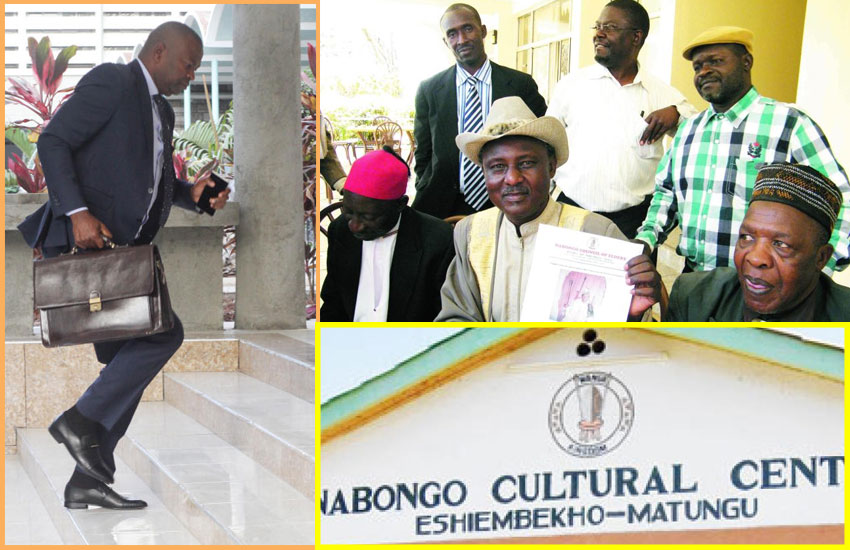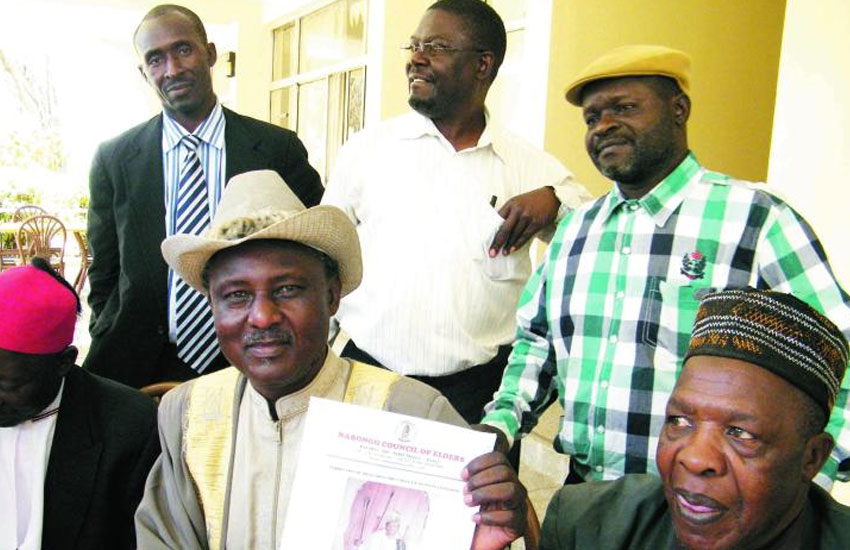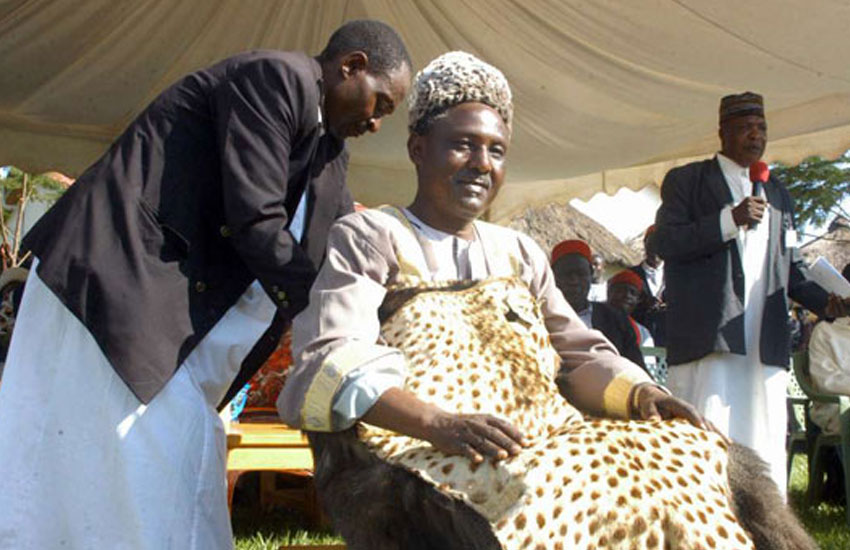
Rashid Echesa made history when he became the first Wanga to be appointed ‘Cabinet Minister’.
Echesa’s clan, the Wanga, is one of the 18 sub-nations that form the Abaluyia community. The Wanga have never had a flag and the degrading of their son Rashid Echesa was a big blow to their political ego and confidence.
The geophysical location of the Abawanga is Ebuwanga and they speak Oluwanga widely considered standard Luyia. Their organised system of government historicised them more than any other Luyia clan.
The Wanga were more known and famous under the leadership of Nabongo Mumia Makokha Shiundu who was crowned in 1881 before Joseph Thomson the first white man to set foot in Luyialand held talks with him in 1883.
Nabongo is a title which is associated with traditional cultural traits like the leopard skin cloak, ritual killing of nabongo and burial of kings in a shroud of fresh bull’s hide and bushbuck imbongo totem.
The white man’s arrival found the Wanga kingdom the only organised form of government not just in Luyialand, but in the whole of Kenya. The British therefore used them as agents to rule other Luyias.

His half-brother Murunga was directed to rule the Isukha and Idakho. In 1908 he transferred him to oversee the northern part of Bungoma which had the Bukusu, Tachoni, Teso and Sabaot. Through his ally Sudi Namachanja (father to Cardinal Maurice Otunga) he ruled the southern part of Bungoma.
Mumia appointed his other half-brother Mulama to rule over the Marama, Kisa and Bunyore. His other brother Kadima went to Samia, Bukhayo, Bunyala and Marachi. Kabras was assigned to Shiundu Sakwa while Wambani Sakwa was in Butsotso.
Tomia Sakwa was handed over Banyala (Navakholo) to rule. The only places in Luyialand that Nabongo Mumia did not rule was Maragoli and Tiriki.
Did you know that Nabongo Mumia was the first Luyia to buy a bicycle in 1911 and also became the first Luyia to acquire a motor car in 1920?
With his relatives and henchmen spread out in Luyialand, Mumia was the final authority on all native cases including settling boundary disputes, collecting poll tax and enforce law and order.

The rule was however hated due to the arrogance of the agents and gradually there was a revolt across Luyialand. By 1930 their own kingdom under all Mumia’s agents had been replaced.
Although the traditional authority of the Nabongo or obunabongo (kingship) was overtaken by modernity many aspiring leaders in Luyialand seeks the blessing of the current descendant of Nabongo Mumia called Peter Mumia 2nd.
To the Wanga Mumia remains a legend and their town Mumias was named after him by the colonialists. Unfortunately the colonial administrative headquarters was moved from Mumias to Kakamega in 1919.
Nabongo Mumia died in 1949 at 100 years living the Wanga with a sense of nostalgic royalty in which Rashid Echesa and his supporters may feel they deserve.
 The Standard Group Plc is a multi-media organization with investments in media
platforms spanning newspaper print
operations, television, radio broadcasting, digital and online services. The
Standard Group is recognized as a
leading multi-media house in Kenya with a key influence in matters of national and
international interest.
The Standard Group Plc is a multi-media organization with investments in media
platforms spanning newspaper print
operations, television, radio broadcasting, digital and online services. The
Standard Group is recognized as a
leading multi-media house in Kenya with a key influence in matters of national and
international interest.
